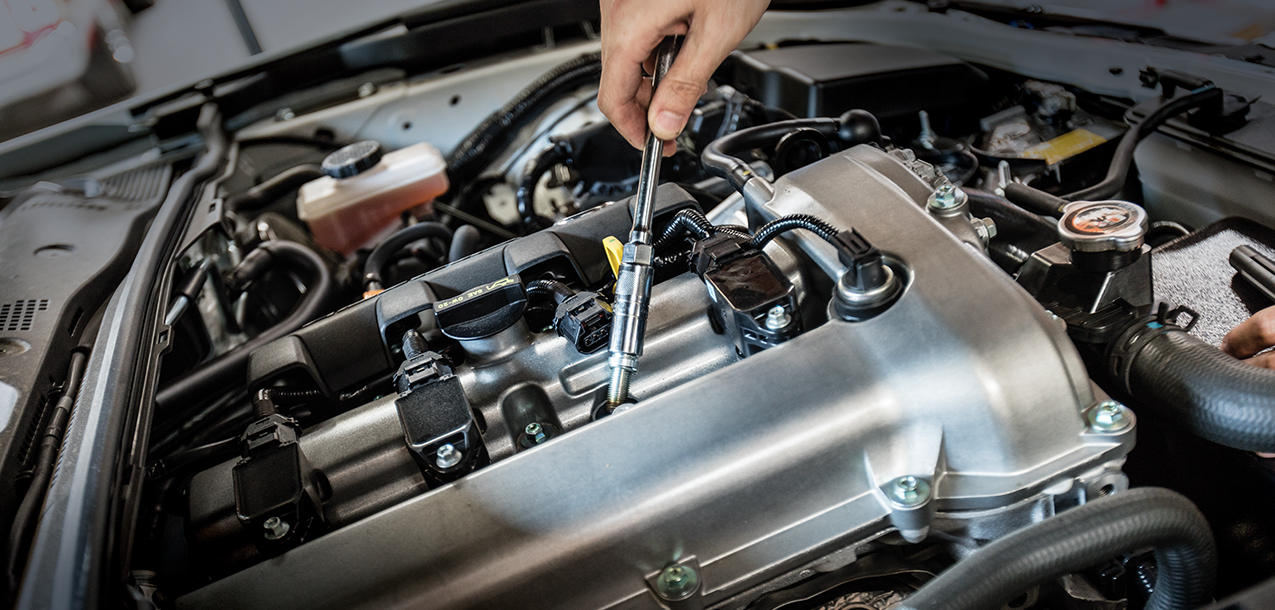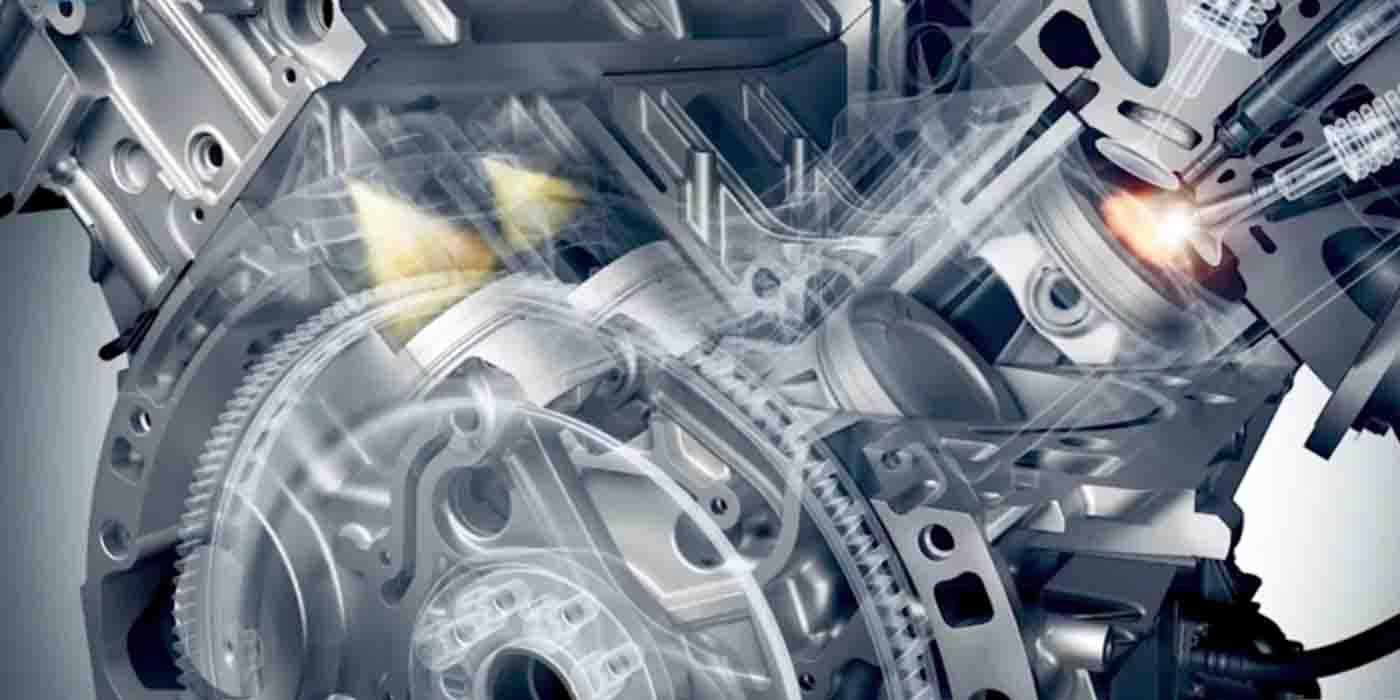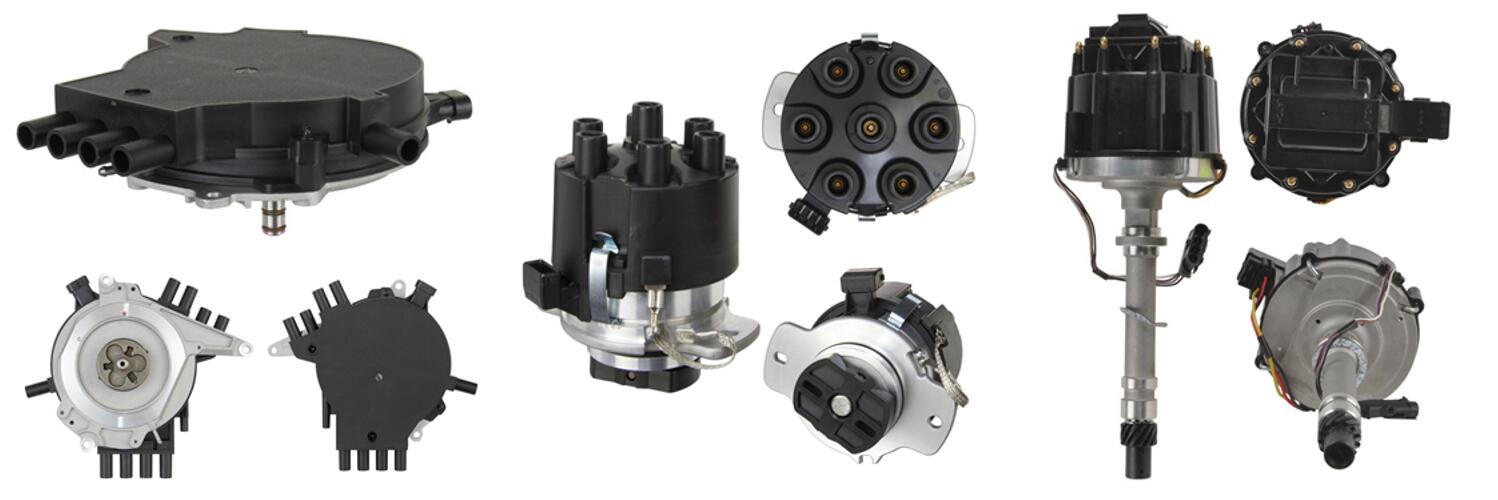
In order to work properly, the engine regularly supplies the spark plug with enough energy of high voltage (about 15000 - 30000V) in terms of each cylinder's ignition order. The spark plug produces intense enough sparks to ignite the air-fuel mixture. All devices producing electric sparks between two spark plug electrodes constitute an engine "ignition system".
2.1 Conventional ignition system
2.2 Electronic ignition system
2.2.1 Transistorized ignition system
2.2.2 Integrated circuit ignition system
2.3 Computerized Ignition System
5.5 Electromagnetic induction generator
● The ignition system turns the low voltage of the power supply into a high voltage one, then sends the voltage to each cylinder in turn by the ignition sequence to ignite the compressed air-fuel mixture.
● The ignition system adapts to the changes in working conditions. It automatically adjusts the ignition timing to ensure reliable and accurate ignition.
● The ignition system allows the manual calibration of the ignition moment while changing the fuel or installing the distributor.

2.1 Conventional ignition system
The conventional ignition system is powered by a battery or generator. The mechanical contacts control the ignition moment. One mechanical automatic mechanism applies to the adjustment of the ignition moment. The energy storage method is an inductive energy type.
The conventional ignition system is simple in structure and low in cost. It is a kind of ignition system used in the early period, and it is popular. However, this system is unreliable, and the ignition condition is affected by the speed and technical condition of the contacts, which requires frequent maintenance and adjustment.
2.2 Electronic ignition system
The electronic ignition system is powered by a battery or generator to provide electrical energy. The transistor controls the ignition moment. The mechanical mechanism or electronic mechanism adjusts the ignition moment. There are two methods of energy storage: inductive energy storage and capacitive energy storage.
The electronic ignition system has high ignition voltage and ignition energy. It is immune to working and usage conditions. This system has a simple structure and a small maintenance workload. It saves fuel and reduces pollution. It is more and more popular now.
There are two types of electronic ignition systems: transistorized ignition system and integrated circuit ignition system.
2.2.1 Transistorized ignition system
The battery or generator provides electrical energy to this ignition system. The transistor controls the on/off of the ignition circuit. The signal generator controls the ignition moment. The ignition moment is automatically adjusted by the mechanical device.
There are three commonly used signal generators: magnetic induction type, Hall type, and photoelectric type.
2.2.2 Integrated circuit ignition system
The battery or generator provides electrical energy to the ignition system. The integrated circuit controls the on/off of the ignition. The signal generator controls the ignition moment. The mechanical automatical device adjusts the ignition moment.
The classification of the signal generator is the same as the classification of the transistorized ignition system.
2.3 Computerized Ignition System
The computerized ignition system consists of a power supply, sensors, ECU, ignitior, ignition coil, distributor, and spark plugs.
The power supply provides ignition energy. Sensors provide the ECU with the signals required for ignition. ECU is the center of the electronic control ignition system. It receives the signals from sensors, calculates the optimum ignition advance angle, and issues commands to the ignitor. The ignitor drives ignition coils to work. The ignition coil turns low voltage into high voltage. The distributor sends the high voltage to the spark plugs of each cylinder in turn by the engine ignition sequence. The spark plugs produce high voltage sparks to ignite the air-fuel mixture in the cylinder.

● The ignition system is capable of generating a sufficient voltage to break through the gap of the spark plug.
● The sparks should have enough energy.
● The ignition moment should adapt to operating conditions of the engine.
● When checking or carrying out necessary disassembly, switch off the ignition first.
● The battery should be in a fully charged state. The wires in the ignition system should be well connected, especially the bond strap.
● When replacing the components of the ignition system, you should replace the same model. Don't mix various models, and don't replace the special ignition coil with a common one.
● When soldering on the vehicle, remove the battery wire first.
● When washing the car, avoid splashing water into the electronic components.
● When diagnosing faults, do not use the "scratch method".
● The battery must not be removed while the engine is running.
Set the multimeter in the resistance range to respectively measure the resistance of the primary and secondary windings. If the measured resistance is infinite, the winding is defective. If the value is too large or too small, the winding has poor contact or short-circuit faults.
Use a multimeter to measure the resistance between the ignition coil terminals and the ignition coil shell. If the value is zero, the winding overlaps. If the value is less than 50 mΩ, the insulation performance is poor.
Test the distributor cap for cracks. Check if carbon posts are too short and not flexible. Measure the insulation of the high voltage terminals by the high voltage ignition test and check if there is electricity leakage. Test the high voltage wires for breakage and measure their resistance, which should be below 25 kΩ.
Make the vacuum ignition advancer not work. With the engine speed increases, check whether the ignition advance angle gets increased by a special ignition timing light, which can determine whether the centrifugal ignition advance mechanism works.
Make the engine runs at 2000r/min, use the vacuum pump to pump the vacuum advance mechanism. Observe whether the working condition of the engine changes, which can determine whether the vacuum ignition advance mechanism fails.
● When the engine is running at high or low speed, make a short circuit in the spark plug with a screwdriver. If there is no significant change in the sound and speed of the engine, then the spark plug is faulty.
● Take the spark plug out of the cylinder. Install it in the high-voltage line and make the spark plug shell contact with the cylinder. Carry out the ignition test. If the spark plug does not discharge, it is a faulty one.
5.5 Electromagnetic induction generator
Check the air gap between the rotor and the stator. It should be 0.2 - 0.4 mm. If it does not match, make an adjustment.Check the resistance of the induction coil. If the value is infinite, the coil is broken. If it is too high or too low, the signal generator assembly needs replacement.
Turn off the ignition switch. Open the distributor cap. Unplug the central high voltage wire on the distributor cap and latch it. Connect the two contact pins of the voltmeter between the signal wire (green-white wire) and the bond strap (brown-white wire) of the Hall generator connector (or between two controller plugs).
Turn on the ignition switch, start the engine and observe the value on the voltmeter. When the blade of the trigger impeller is in the air gap, the voltage value is 2 - 9V. When the blade of the trigger impeller is not in the air gap, the voltage value is 0.3 - 0.4V. If it does not match the standard, the Hall sensor needs replacement.
● The engine won't start.
Symptom: The starter works normally. The circuit is perfect, but the engine doesn't start.
Solution: Check if the crankshaft position sensor works properly or whether the ignition coil damages. If these are the causes, replace the corresponding parts.

● Individual engine cylinder does not work.
Symptom: Rhythmic noises happen when the engine is working. It runs unevenly.
Solution: Turn off the ignition cylinder by cylinder. Connect the high voltage line of each cylinder to the ground in turn. If the working state remains, the fault is in this particular cylinder. The problem can be solved by checking the cylinder pressure and replacing the spark plug.
Maintenance of the ignition system generally contains cleaning, inspection, and adjustment operations. Many faults in the ignition system are related to the particular driving environment, such as road bumps, mud water, rust, corrosion, etc. These conditions lead to poor wiring contact, affect the performance of the ignition system.
The ignition system is an essential part of the engine. The excellent performance of the ignition system has a significant impact on the engine's power, fuel consumption, and exhaust pollution. Keeping the ignition system working properly is crucial to car repair and maintenance.
 Lauritz Carolsfeld
Lauritz Carolsfeld  September 13, 2021
September 13, 2021


